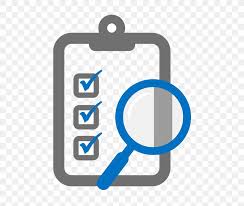How to Utilize Data Analytics for Better Decision Making in Marketing 📊📈
In today's digital age, data analytics has become a game-changer in the field of marketing. Gone are the days when marketers solely relied on gut feelings and intuition for making crucial business decisions. Now, with the power of data analytics, marketers can harness the immense potential of data-driven insights to drive their marketing strategies to new heights. In this article, we will explore how data analytics can be effectively utilized for better decision making in marketing, along with practical examples and professional advice.
Define your marketing goals: Before diving into data analytics, it's essential to have a clear understanding of your marketing goals. Whether it's increasing brand awareness, driving website traffic, or improving lead generation, outlining your objectives will help you establish a solid foundation for data analysis.
Identify relevant data sources: Gather data from various sources such as web analytics, CRM systems, social media platforms, and customer surveys. This diverse range of data will provide a comprehensive view of your target audience, enabling you to make informed decisions.
Cleanse and organize your data: Data cleansing is crucial to ensure accuracy and eliminate any inconsistencies or errors that may affect your analysis. Utilize data cleansing tools and techniques to refine your datasets, making them reliable and ready for analysis.
Apply statistical techniques: Statistical analysis plays a vital role in data analytics. Techniques such as regression analysis, cluster analysis, and A/B testing can provide valuable insights into consumer behavior, preferences, and trends, empowering marketers to make data-driven decisions.
Utilize predictive modeling: Predictive modeling allows marketers to forecast future outcomes based on historical data patterns. By leveraging algorithms and machine learning techniques, you can predict customer churn, identify upsell opportunities, and optimize marketing campaigns for better results.
Segment your audience: Data analytics enables marketers to segment their target audience based on key demographics, interests, or behaviors. By understanding the unique characteristics of each segment, you can tailor your marketing messages and strategies to resonate with specific customer groups.
Personalize customer experiences: Data analytics opens the door to personalization. By analyzing customer data, marketers can deliver highly personalized experiences, recommendations, and offers that cater to individual preferences, enhancing customer satisfaction and loyalty.
Monitor and track marketing campaigns: Analytics tools provide real-time insights into the performance of your marketing campaigns. By monitoring key metrics such as click-through rates, conversion rates, and return on investment (ROI), you can identify what works and what doesn't, optimizing your strategies accordingly.
Optimize marketing channels: Through data analytics, marketers can identify the most effective marketing channels for their target audience. By analyzing customer touchpoints and attribution models, you can allocate your budget and resources to the channels that yield the highest returns.
Identify new market opportunities: Data analytics can uncover hidden market opportunities by identifying emerging trends, customer needs, or untapped segments. By analyzing market data, you can identify gaps in the market and develop new products or services to meet those demands.
Measure customer satisfaction: Customer satisfaction is crucial for the success of any marketing strategy. By analyzing customer feedback, reviews, and sentiment analysis, you can gain insights into the factors that drive satisfaction or dissatisfaction, allowing you to address any issues promptly.
Stay ahead of the competition: Data analytics equips marketers with a competitive advantage by providing insights into competitors' strategies, pricing, and customer behavior. By monitoring the competition, you can identify gaps and develop strategies to differentiate yourself in the market.
Evaluate marketing ROI: Calculating the return on investment (ROI) of your marketing efforts is essential to justify your marketing spend. Data analytics enables you to measure the impact of your campaigns, track the customer journey, and allocate resources effectively.
Continuously learn and adapt: Data analytics is a continuous process. Regularly analyzing data and adapting your marketing strategies based on insights will ensure you stay ahead of the curve in a rapidly evolving digital landscape.
Seek professional expertise: Data analytics can be complex, and seeking professional expertise can greatly enhance your decision-making process. Consider partnering with data analytics firms or hiring professionals who specialize in marketing analytics to maximize the potential of your data.
In conclusion, data analytics has revolutionized the way marketers make decisions. By harnessing the power of data-driven insights, marketers can optimize their strategies, personalize customer experiences, identify new market opportunities, and stay ahead of the competition. Embrace data analytics as a valuable tool in your marketing arsenal, and watch your decision-making process take a giant leap towards success. 🚀📈







No comments yet. Be the first to share your thoughts!